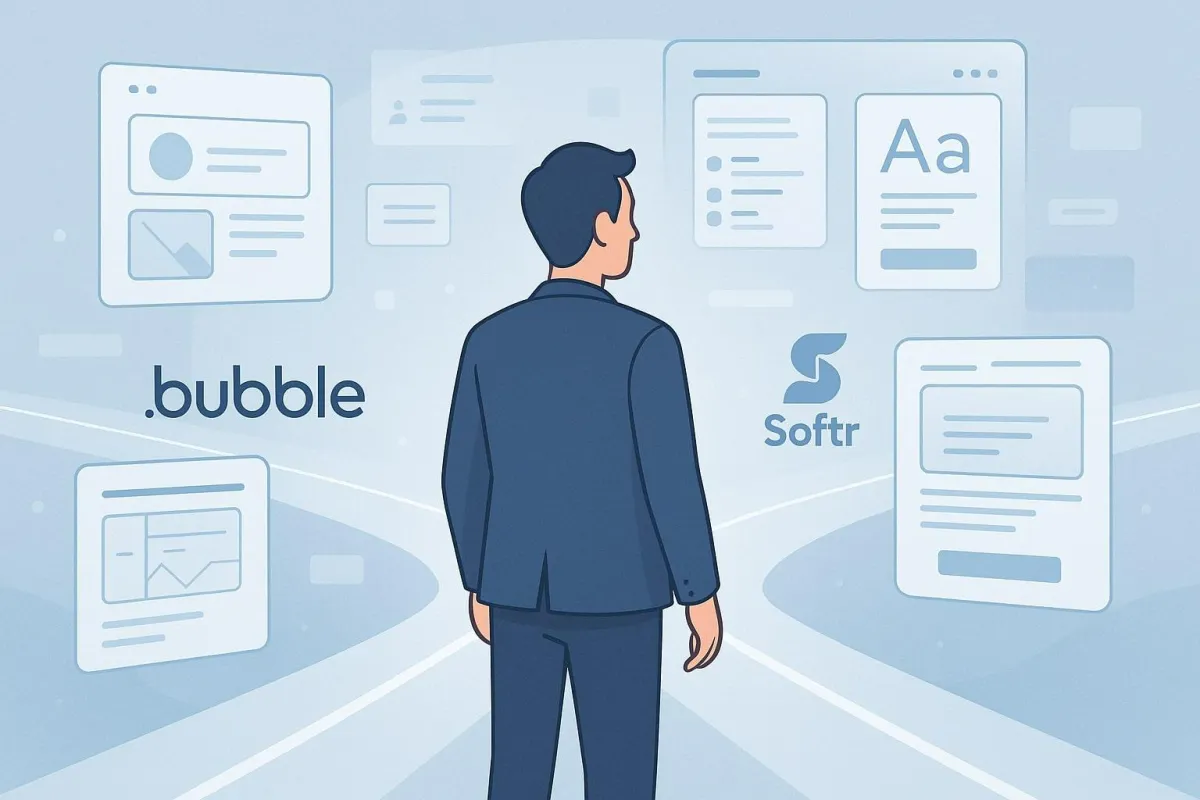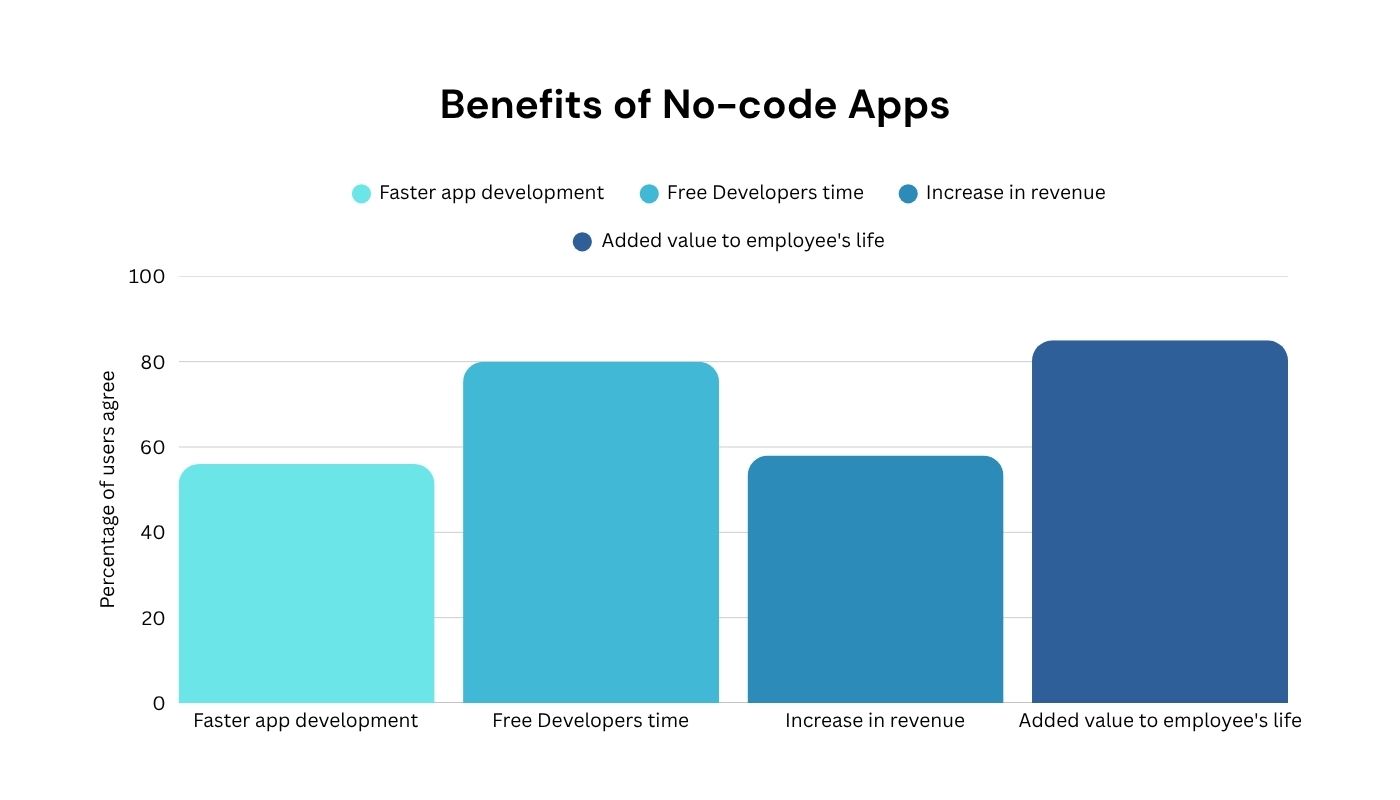
Are No-Code Apps Scalable? What Non-Tech Founders Need to Know
Are No-Code Apps Really Scalable? What Founders Need to Know Before Building
In the startup world, speed is everything — and no-code platforms are winning attention for just that reason.
With a few clicks and drag-and-drop tools, you can launch a working app in days instead of months. It feels like a hack, a shortcut, even a revolution. And for many early-stage founders, it is.
But somewhere down the line, this question shows up — sometimes too late:
“Can this app actually grow with my business?”
There’s a common myth floating around: that no-code tools are only good for MVPs, and scaling with them is basically impossible. On the other side, some believe no-code can do it all — scale, perform, and flex like any custom-built solution.
The truth? Like most things in tech, it depends — and in this post, we’re breaking it down. Whether you’re already building on Bubble or still considering your options, we’ll help you answer:
Is no-code the right long-term move for your business app?

What Are No-Code Apps and Why Are They So Popular Right Now?
You’ve probably seen the buzz — Bubble, Glide, Adalo, Webflow, Softr. No-code platforms are everywhere. And they’re not just for side hustles anymore — startups are using them to build real products, test business models, and get in front of users without touching a single line of code.
So, what exactly is no-code?
At its core, no-code development lets you build apps using a visual interface. Think drag-and-drop components instead of syntax and semicolons. You define logic through workflows, connect databases, and even integrate with APIs — all through point-and-click tools.
For early-stage founders, it’s a massive unlock. No-code helps you:
🕒 Save time — launch faster than traditional dev cycles
💰 Reduce costs — no dev team needed (yet)
🧪 Test ideas quickly — validate features, pivot fast
🔄 Iterate often — update your product without developer backlogs

It’s why companies like Dividend Finance (valued at $300M+) used Bubble to build their initial product. It’s not just prototyping anymore — some startups are building their entire stack this way.
But here’s the kicker: popularity doesn’t equal scalability. Just because it’s easy to start with no-code doesn’t mean it’s always the best choice for long-term growth.
That’s where we’re headed next.
What Does “Scalability” Really Mean in App Development?
"Scalable" gets thrown around a lot — especially in investor decks and tech blogs. But when it comes to apps, the word means something very specific.
At its core, scalability means your app can grow — in users, data, traffic, and complexity — without breaking down or needing a total rebuild.
Here's what that looks like in real terms:
Performance at scale: Can the app still load fast with 10,000+ users or massive data sets?
Architecture flexibility: Can you add new features or workflows without rebuilding the whole thing?
Infrastructure readiness: Is your database, server, and logic setup ready for growth?
Security and compliance: Can the system handle more sensitive data and privacy demands?
Cost-effectiveness: Can your app scale without burning through your runway?
Scalability isn’t just a “tech problem” — it’s a business risk. If your app can’t keep up when your marketing finally clicks or your customer base explodes, you could stall growth or lose users entirely.
So when we ask, “Are no-code apps scalable?” — we’re really asking:
Can no-code platforms support all of this, or will they hit a ceiling?
Let’s dig into that next.
Are No-Code Apps Truly Scalable — Or Do They Have Limits?
Here’s the truth: some no-code platforms can scale — but not all will, and not in every situation.
No-code tools like Bubble, OutSystems, and Xano are built with real scalability in mind. They offer things like database indexing, server-side logic, API integration, and advanced workflows. You’ll find plenty of success stories where startups went from MVP to thousands of users without writing a line of traditional code.
But — and it’s a big “but” — there are limitations.
✅ Where No-code Can Scale:
Internal tools with predictable usage
Marketplaces with moderate transaction volume
Client portals, booking platforms, or dashboards
MVPs that don’t require intense logic or real-time data processing
🚫 Where No-code Struggles:
Apps requiring real-time updates (think chat, live tracking, multiplayer)
Heavy backend processing like AI, analytics, or financial calculations
Highly custom user experiences or animations
Complex security protocols or HIPAA/enterprise-level compliance
You’ll also run into:
Performance bottlenecks as databases grow
Limited backend customization (though some platforms like Xano can help)
Vendor lock-in — meaning you can’t just take your code and leave
Rapid cost increases as you scale usage on paid tiers
So yes — no-code apps can scale, but only within the limits of the platform. And those limits matter a lot when you're trying to grow.
Up next: what kinds of apps actually work long-term with no-code, and which don’t.
What Kind of Apps Work Well (and Not So Well) on No-code?
Not every app needs to be the next Uber. In fact, most don’t. And that’s why no-code platforms shine in a huge number of use cases — especially in early-stage startups and small businesses.
But as we’ve seen, they’re not a perfect fit for every idea.
✅ Best-Fit Use Cases for No-code:
If your app falls into any of these categories, no-code could be a smart, scalable solution:
MVPs and early-stage products
Test your idea fast, get feedback, and iterate — all without a dev team.Internal tools and admin dashboards
Apps for managing customers, content, inventory, or employee workflows.Client portals
Custom portals for customers, freelancers, or vendors to log in and interact with data.CRMs, booking systems, or form-based apps
Apps with structured data, standard flows, and integrations.Niche SaaS tools
Micro-SaaS businesses can run entirely on Bubble, Glide, or Softr with lean teams.
🚫 High-Risk or Bad-Fit Scenarios:
Some app ideas simply outgrow no-code from day one — or become too complex too quickly.
Apps with real-time functionality
Think live messaging, collaborative editing, or rapid syncing — tough to pull off well with no-code.Advanced performance needs
Large-scale data processing, AI-powered features, or heavy video/image handling.Offline access or hardware integration
Apps needing to function offline or integrate with device-level features (e.g. sensors, native GPS) are a poor match.Strict compliance (e.g., HIPAA)
Unless the platform is certified, compliance-heavy industries should be cautious.Fully custom UI/UX
No-code platforms offer templates and visual components — but truly unique user experiences often need custom code.
The bottom line:
If your idea is lean, focused, and well-defined — no-code can be the rocket fuel. But if you're building a complex, high-performance machine from day one, it's worth planning for a more technical build.
When Should You Rethink Your No-Code Stack — Without Leaving No-Code
There’s a common misconception in startup circles:
“At some point, we’ll have to rebuild our app with real code.”
But that’s no longer the full story.
Modern no-code platforms like Bubble, Softr, Xano, and Make are evolving fast — and with the right architecture, it’s possible to scale further than ever before without writing custom code.
The key is choosing the right no-code stack and building it with scale in mind from day one.
👀 Signs You Might Need to Rethink (Not Replace) Your No-code Approach:
You're hitting performance limits on your current platform
You need more advanced logic or automation
Your pricing tier is ballooning due to inefficiencies
You want better API integrations or database flexibility
🛠 What to Do Instead of “Going Full-Code”:
Switch to a more robust no-code platform (e.g., migrate from Glide to Bubble or add a Xano backend)
Refactor your workflows or database setup for better performance
Use external tools (like Make or Zapier) to offload complex automation
Modularize your app — separating logic, UI, and data layers for more control
Conclusion: Yes, No-Code Can Scale — With the Right Approach
The idea that no-code apps can't scale is outdated.
Yes, they have limits. But with the right platform, smart architecture, and a clear growth strategy, no-code can take your app further than ever before — without needing to rebuild from scratch or hire a full dev team.
Whether you're launching your MVP or looking to level up an existing tool, the key is knowing how to build for scale from the start.
At AppReadyNow, we specialize in helping non-technical founders build powerful, scalable no-code apps using platforms like Bubble, Softr, Xano, and more. We don’t just build — we partner with you to plan the right tools, workflows, and systems for the long run.
👋 Ready to bring your app idea to life — or upgrade what you’ve already built?
👉 Book a free discovery call with us and let’s talk through your vision, your growth plan, and the no-code stack that can make it happen.


